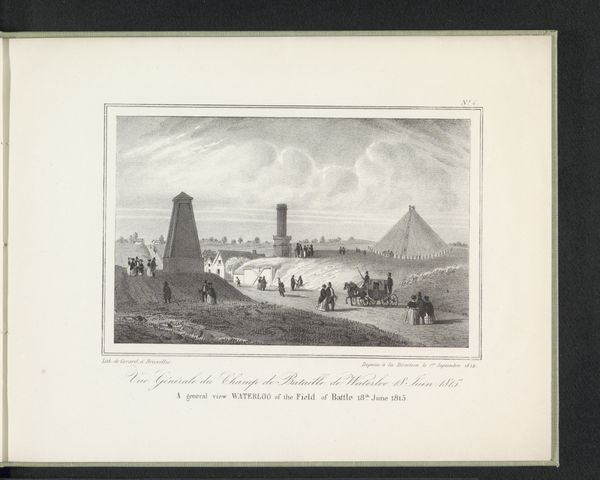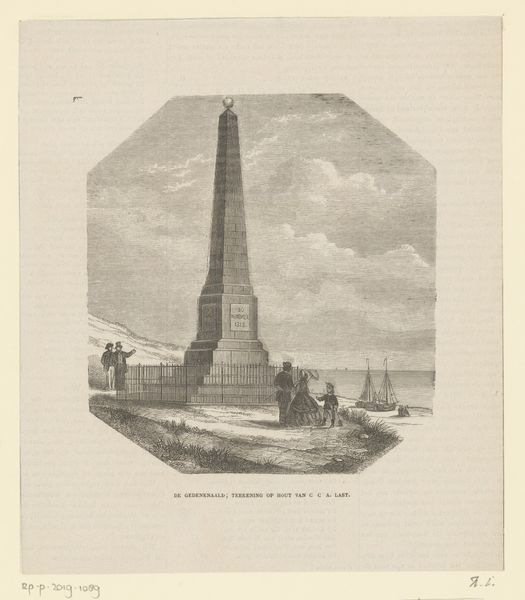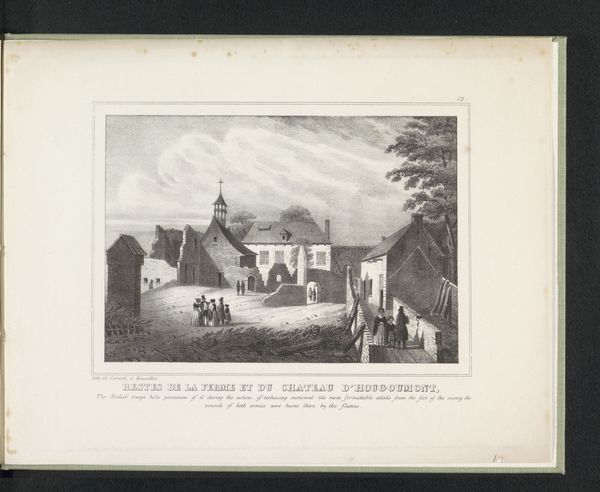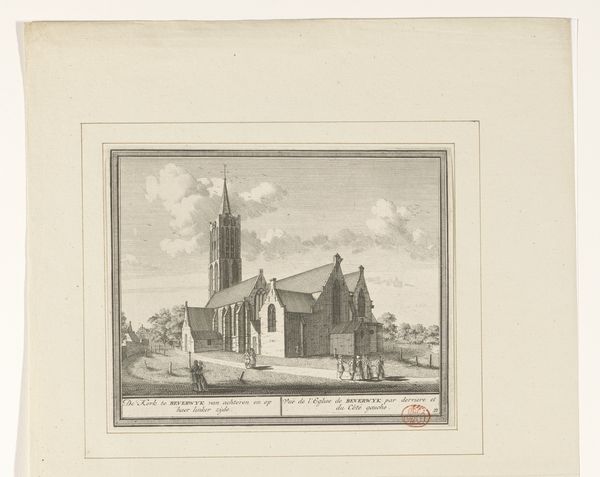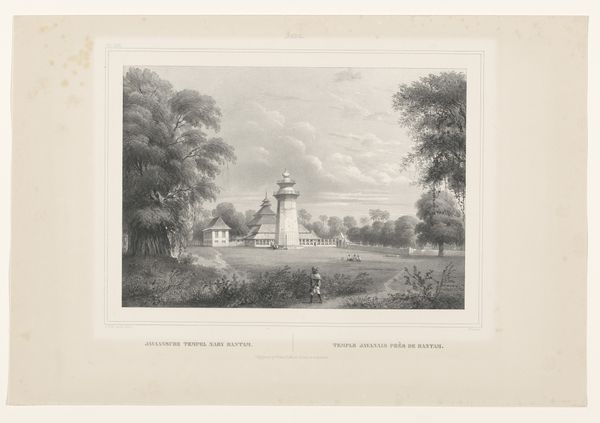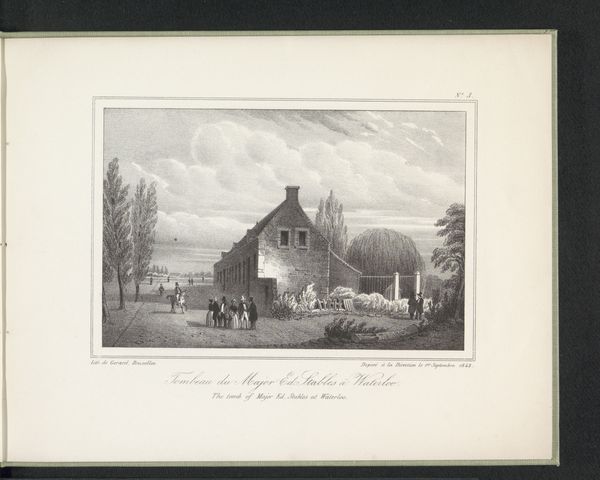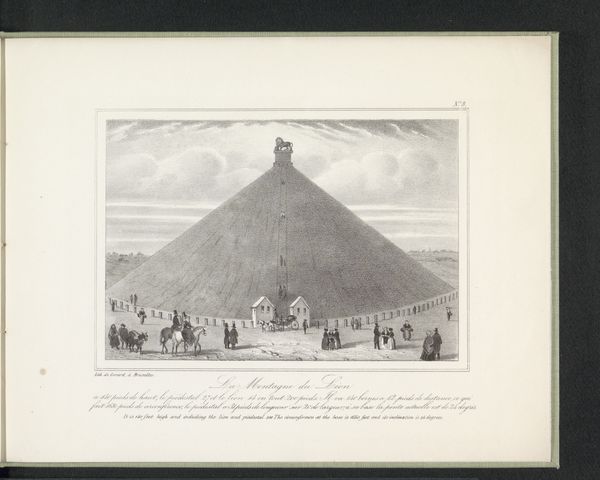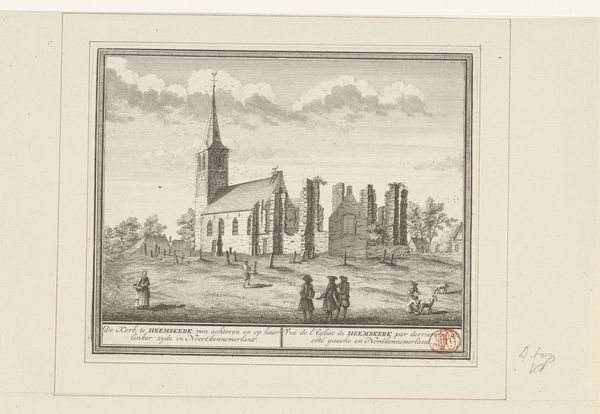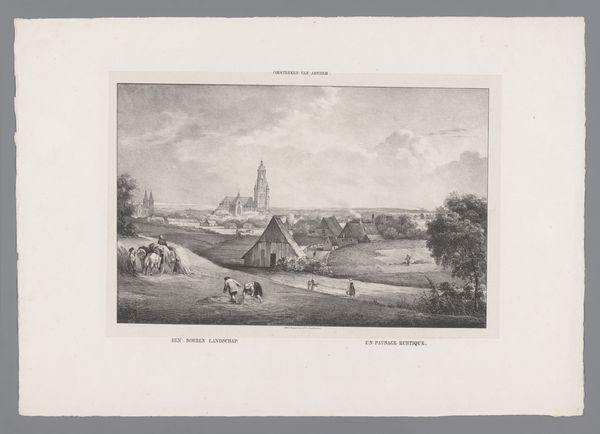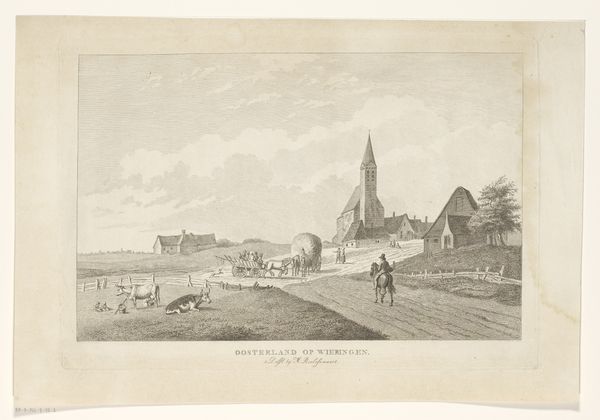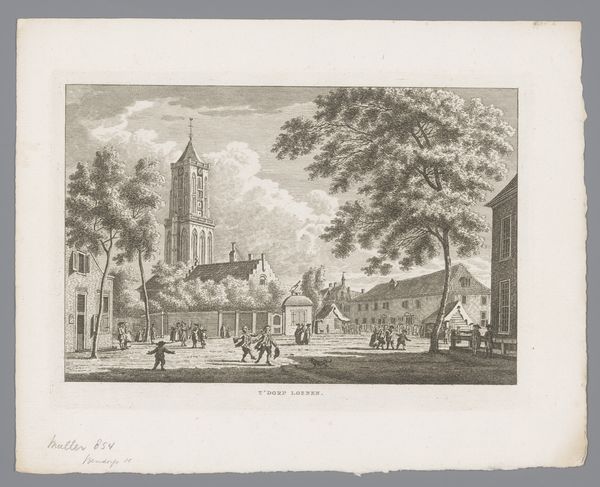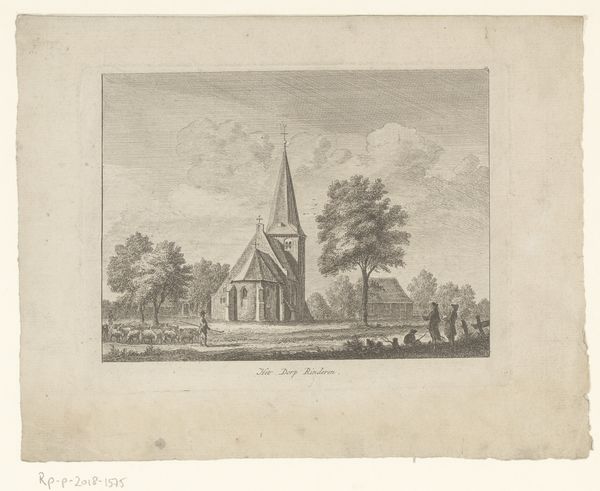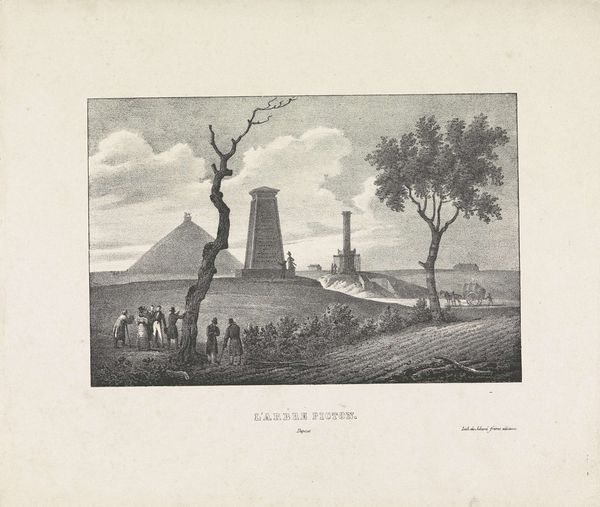
print, engraving
#
neoclacissism
#
narrative-art
# print
#
landscape
#
perspective
#
cityscape
#
history-painting
#
engraving
Dimensions: height 225 mm, width 290 mm
Copyright: Rijks Museum: Open Domain
H. Gérard’s print portrays the Prussian monument near Waterloo. It suggests much about the politics of imagery in 19th century Europe. The monument commemorated the Prussian contribution to Napoleon's defeat in 1815. Erected near Plancenoit, where Prussian forces decisively engaged the French, the monument served as a potent symbol of Prussian military prowess and their role in reshaping the European order. Gérard’s print would have helped disseminate this symbol to a wider public. Notice how the artist uses visual codes and cultural references to reinforce its meaning. The monument’s obelisk form evokes ancient traditions of memorializing power and achievement. But it’s important to remember that the meaning of such a monument is never fixed or universal. Historical sources, such as military records, personal letters, and diplomatic correspondence, can help us understand how contemporaries perceived the monument and the values it represented. By situating this print within its specific socio-political context, we can gain a richer understanding of its significance as a historical artifact.
Comments
No comments
Be the first to comment and join the conversation on the ultimate creative platform.
